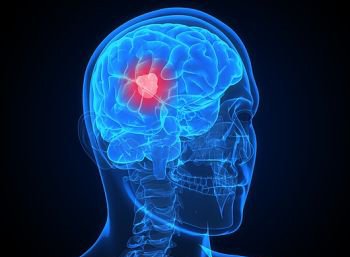
伊利诺斯州的一项研究报告称,个性化预后工具及基因疗法可能会提高恶性胶质瘤(一种破坏性很强的致命脑癌)患者的存活率及生活质量。这项研究的论文以《Cell cycle and aging, morphogenesis, and response to stimuli genes are individualized biomarkers of glioblastoma progression and survival》为题发表在BMC的Medical Genomics杂志上。
“我们确认了恶性胶质瘤幸存者的生物标记,并探索了新的常规及基于临床的基因概况,”研究统计基因组学的博士生Nicola Serao说,“我们可以对恶性胶质瘤三个阶段的生物标记进行比较,这有助于我们了解与癌症幸存者相关联的基因的作用。”
恶性胶质瘤是一种复杂的,多因子影响的疾病,会产生快速而毁灭性的后果,Serao说。尽管已经知道某些基因与恶性胶质瘤的发病有关,但是很少有基因作为恶性胶质瘤幸存者的预后生物标记而被发现,在独立研究报告中得到确认的就更少了。
“你不能只发现与这种癌症有关的某个基因并进行修复,”他说,“这是我们特色研究的其中一个方面。我们可以同时观察好几个基因并将其与这种癌症联系起来。”
通过对来自22000个基因的遗传信息的分析筛选,Serao最终获得了一组与这种脑癌有关的基因。
他对各种存活变量,包括从出生到死亡、从诊断到死亡的存活时间长度以及从诊断到癌症的发展等进行了研究。
“我们研究了不同变量,它们之间是互补的,使我们对那些基因有了更多的了解,”他说,“我们知道,某些基因相比其他基因对癌症的影响更深。我们还发现,一些基因仅以一种变量出现,因此它们特定出现在癌症的某个阶段。”
该研究不仅评估了各种基因对生存的影响,还将诸如年龄、种族及性别等因素考虑在内。
“我们的研究表明,在治疗上不能对所有的病人都采取相同的方法,”Serao说,“例如,我们发现基因表达模式依性别而不同,有时候会相反,这说明影响这些基因的效果将不会毫无差别。有了我们先进的遗传工具,基于性别、种族及年龄的个性化基因治疗是可行的。”
由于基因很少单独起作用,该研究小组同时研究多个基因,揭示了与恶性胶质瘤患者存活有关的基因网络。
动物科学及生物信息学教授、这样研究的共同研究者Sandra Rodriguez Zas说,他们还研究了与恶性胶质瘤患者存活及癌症发生有关的各种基因之间的共性。
“如果与大量存活有关的基因属于一个特定途径,则认为该途径被加强了,”Rodriguez Zas说。“基于该途径及相关基因是否具有肿瘤抑制或致瘤特点,我们可以使用靶向疗法来支持或攻击该途径。”
拥有了对这些基因的生物学含义或角色的更深入的了解,可以让研究人员拥有更加丰富的手段来对抗这种形式的脑癌。
“由于我们所使用的新颖方法,我们自信可以预测患者的生存几率并挑选最为恰当的疗法,”她说道。

 Cell cycle and aging, morphogenesis, and response to stimuli genes are individualized biomarkers of glioblastoma progression and survival
Cell cycle and aging, morphogenesis, and response to stimuli genes are individualized biomarkers of glioblastoma progression and survival
Nicola VL Serão, Kristin R Delfino, Bruce R Southey, Jonathan E Beever and Sandra L Rodriguez-Zas
Background Glioblastoma is a complex multifactorial disorder that has swift and devastating consequences. Few genes have been consistently identified as prognostic biomarkers of glioblastoma survival. The goal of this study was to identify general and clinical-dependent biomarker genes and biological processes of three complementary events: lifetime, overall and progression-free glioblastoma survival.
Methods A novel analytical strategy was developed to identify general associations between the biomarkers and glioblastoma, and associations that depend on cohort groups, such as race, gender, and therapy. Gene network inference, cross-validation and functional analyses further supported the identified biomarkers.
Results A total of 61, 47 and 60 gene expression profiles were significantly associated with lifetime, overall, and progression-free survival, respectively. The vast majority of these genes have been previously reported to be associated with glioblastoma (35, 24, and 35 genes, respectively) or with other cancers (10, 19, and 15 genes, respectively) and the rest (16, 4, and 10 genes, respectively) are novel associations. Pik3r1, E2f3, Akr1c3, Csf1, Jag2, Plcg1, Rpl37a, Sod2, Topors, Hras, Mdm2, Camk2g, Fstl1, Il13ra1, Mtap and Tp53 were associated with multiple survival events.
Most genes (from 90 to 96%) were associated with survival in a general or cohort-independent manner and thus the same trend is observed across all clinical levels studied. The most extreme associations between profiles and survival were observed for Syne1, Pdcd4, Ighg1, Tgfa, Pla2g7, and Paics. Several genes were found to have a cohort-dependent association with survival and these associations are the basis for individualized prognostic and gene-based therapies. C2, Egfr, Prkcb, Igf2bp3, and Gdf10 had gender-dependent associations; Sox10, Rps20, Rab31, and Vav3 had race-dependent associations; Chi3l1, Prkcb, Polr2d, and Apool had therapy-dependent associations. Biological processes associated glioblastoma survival included morphogenesis, cell cycle, aging, response to stimuli, and programmed cell death.
Conclusions Known biomarkers of glioblastoma survival were confirmed, and new general and clinical-dependent gene profiles were uncovered. The comparison of biomarkers across glioblastoma phases and functional analyses offered insights into the role of genes. These findings support the development of more accurate and personalized prognostic tools and gene-based therapies that improve the survival and quality of life of individuals afflicted by glioblastoma multiforme.
文献链接:https://www.biodiscover.com/news/pathology/library/10885







